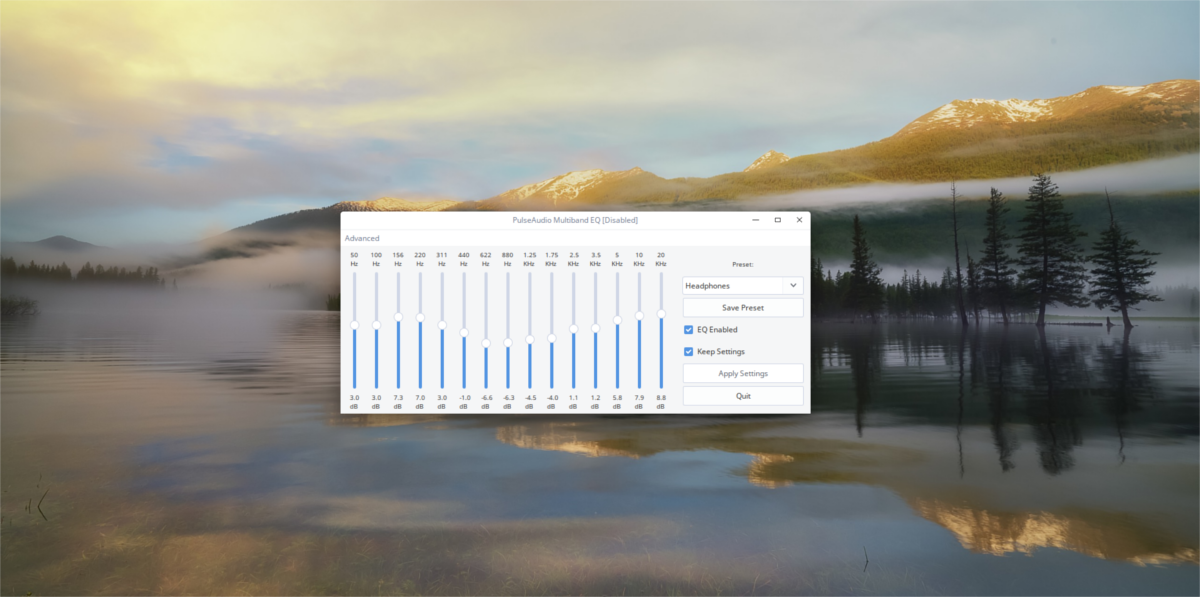The sound system on Linux is first rate, however not the very best. That’s why we’ve determined to go over some methods you’ll be able to simply enhance your Pulse Audio sound by including a system-wide equalizer. The simplest method so as to add an equalizer is to put in PulseAudio Equalizer on Linux. We’re going to cowl intimately how one can set up it and go over methods you’ll be able to extra simply handle the Linux sound system.
SPOILER ALERT: Scroll down and watch the video tutorial on the finish of this text.
PulseAudio Equalizer On Linux
A good way to enhance the general sound high quality on Linux is to put in an equalizer nonetheless equalizer constructed into the music participant isn’t sufficient. As a substitute, there’s a totally different answer: Pulse Audio Equalizer. It permits the person to have a system-wide equalizer for all audio coming out and in of the system. Which means it doesn’t matter what you’re listening to, be it music, movies, or human voices, you’ll be capable to simply tweak it.
Getting the equalizer working is simple, and it begins with putting in it to the system. As a consequence of the truth that Pulse is open code, plenty of plugins and add-ons have been developed through the years. The equalizer might be the should used. Consequently, many Linux distributions select to ship it (in some type or one other). Right here’s easy methods to set up it.
Ubuntu
sudo apt set up pulseaudio-equalizer
Debian
sudo apt-get set up pulseaudio-equalizer
Arch Linux
sudo pacman -S pulseaudio-equalizer
Fedora
sudo dnf set up pulseaudio-equalizer
OpenSUSE
The SUSE construct service makes putting in the equalizer fairly simple. Head over to this page and click on the 1-click set up button. The software program helps all present variations of the equalizer.
Different Linuxes
Sadly there isn’t a lot in the best way of supply code for this Pulse Audio plugin. Consequently, you’ll must look exhausting in your model of Linux for the equalizer. There are some mission information on Launchpad, that customers can take aside, however good luck. If you’d like a great system-wide equalizer, greatest to make use of one of many Linux distributions listed above.
Utilizing The Equalizer

After the equalizer is on the system, merely open your utility menu and seek for “equalizer”, or “pulse audio equalizer”, and launch it. When it opens, you’ll discover it appears similar to another software program equalizer on the market. Full with sliders, and presets. Click on the preset menu and type by way of the totally different EQ setups. These may be modified at any time.
To allow the EQ, verify the field “EQ enabled”. As well as, make the EQ run always by checking the “Keep Settings” field. Lastly, click on the “Advanced” button to entry superior settings.
Notice: when a person strikes the sliders up and down, the label of the EQ will change from the preset identify, to “custom”. Save any customized preset by clicking “save preset”.
Fast Pulse Audio Tip
With the Equalizer put in, the Linux audio system is a lot better. Nonetheless, Pulse Audio is a really complicated instrument, and because it stands not many customers know easy methods to simply manipulate it. That’s why, on this part, we’re going to speak a few instrument anybody can set up to simply take management of the complicated Linux audio system. It begins by putting in the Pavucontrol instrument.
It’s a graphical management instrument for the Linux audio system. With it, customers can do all kinds of issues.
Ubuntu
sudo apt set up pavucontrol
Debian
sudo apt-get set up pavucontrol
Arch Linux
sudo pacman -S pavucontrol
Fedora
sudo dnf set up pavucontrol
OpenSUSE
sudo zypper set up pavucontrol
Different Linuxes
The Pavucontrol instrument is well discovered on many Linux distributions below the package deal identify “pavucontrol”. Open your package deal supervisor and seek for that, or one thing related like “pulse audio control”.
Utilization
Inside Pavucontrol, there are 5 tabs; “playback”, “recording”, “output devices”, “input devices”, and “configuration”. To begin off, the playback tab represents any program presently utilizing the heart beat audio sound system. Management the quantity of the playback of every program on this tab.
When you’ve acquired a number of audio units, choose the audio system label, and click on it to swap to a special system.
Within the recording tab, issues are very a lot the identical. As a substitute of displaying playback, it reveals all applications presently recording audio. Use the quantity sliders to handle how loud the enter quantity is. Click on the audio system label to change what system Pulse makes use of to file with.
The subsequent tab is “input devices”. This tab permits customers to handle the quantity of every particular person microphone, and system arrange for recording.
The “output” tab is much like the “input” tab. Just like the enter part, output permits the person to simply handle the quantity of playback units individually.
Lastly, the configuration part reveals all the audio tools. On this part, customers can simply activate and off particular person audio system, microphones and and so on. To set a tool as default, click on the “fallback button”. Doing this makes this audio system the default, above all others.
Conclusion
The Pulse Audio sound system has lengthy been the enemy of the Linux group. For years, customers have been battling with it, and combating the sound system simply to get first rate audio on Linux. 13 years later, it’s a lot much less vulnerable to crashing and general is an efficient system.
